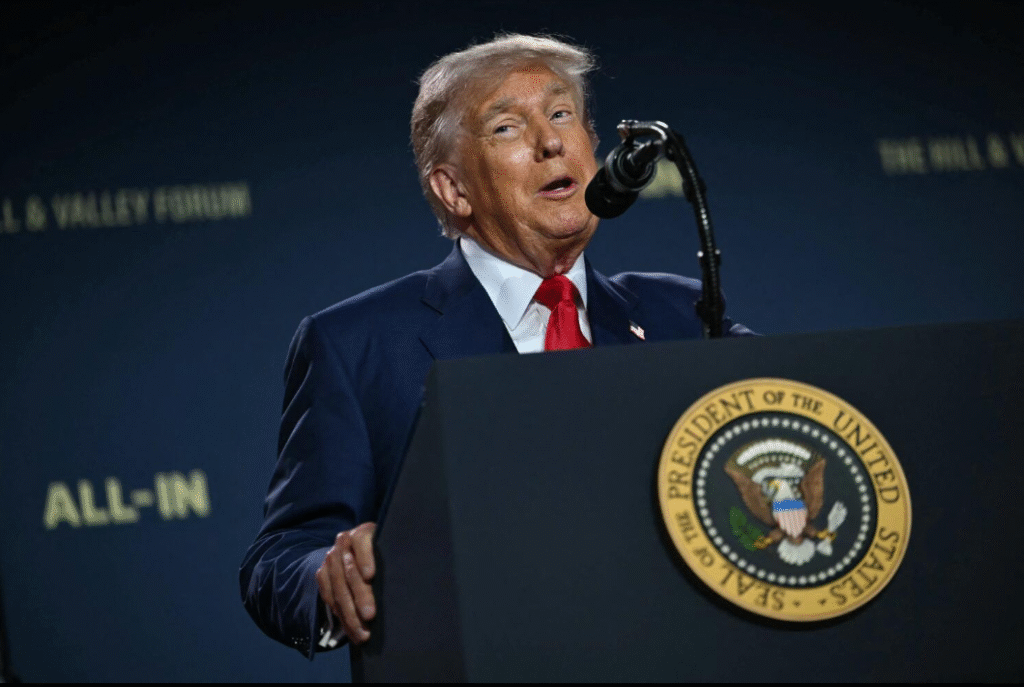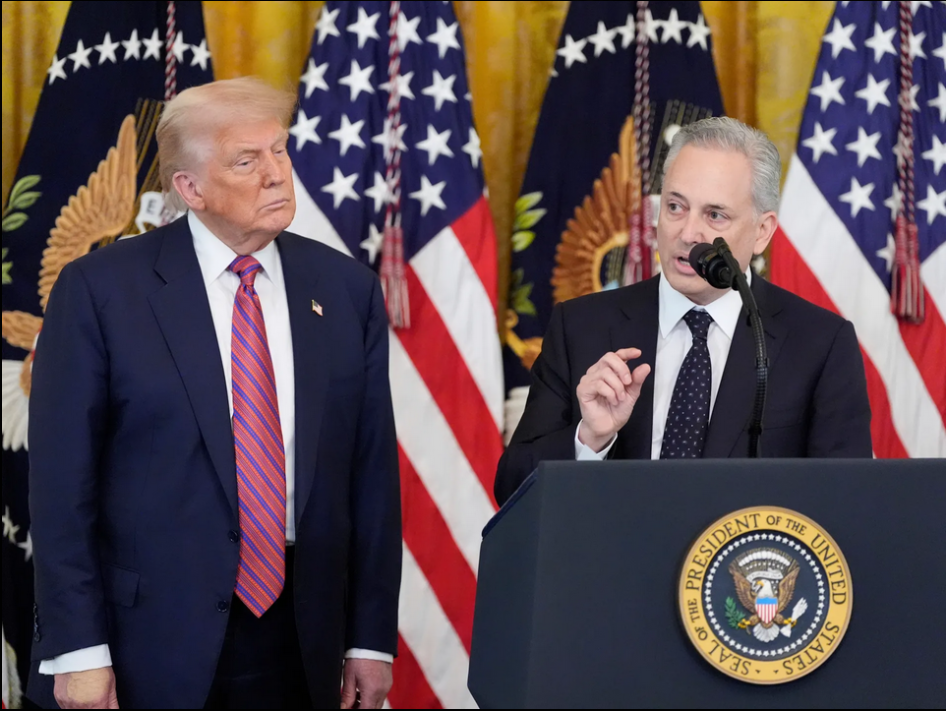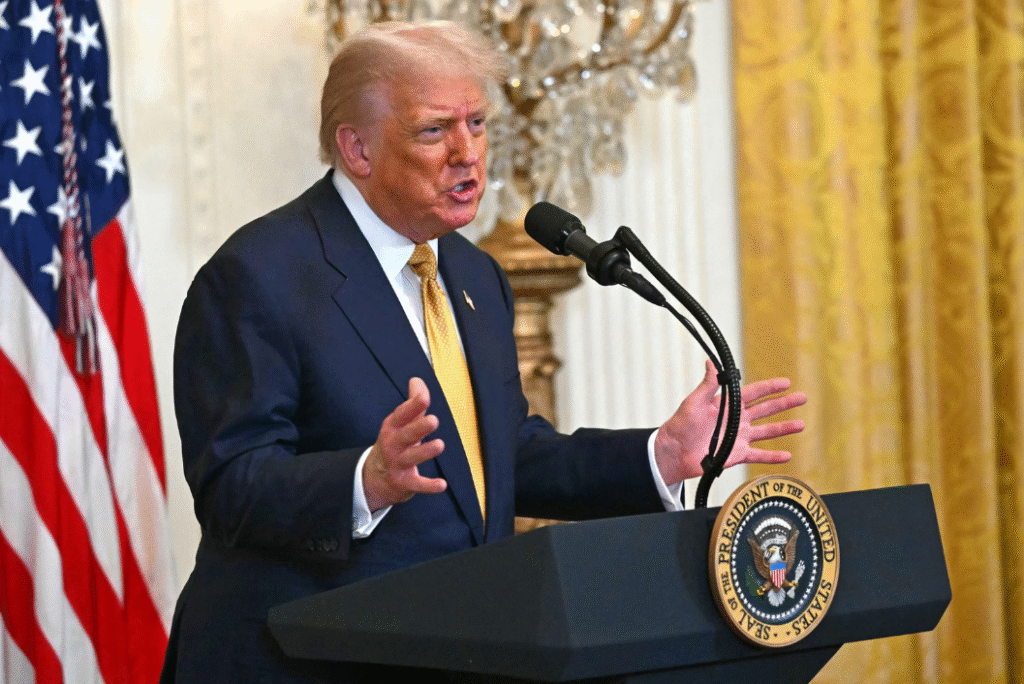1. Overview & Executive Action
On July 23, 2025, President Donald Trump formally unveiled a sweeping national AI strategy—“Winning the AI Race: America’s AI Action Plan”—supported by three executive orders. It aims to ensure U.S. technological leadership by dismantling previous regulations, accelerating infrastructure development, and enforcing ideological neutrality in AI systems used by the government.
2. Three Strategic Pillars
a) Accelerating AI Innovation
Trump directed all federal agencies to revoke or revise Biden-era AI orders that he deems overly restrictive. The administration emphasizes free-market innovation, seeking to unleash public and private sector R&D in AI without regulatory encumbrances.
b) Building AI Infrastructure
A central thrust is fast‑tracking the development of energy-intensive AI data centers and semiconductor fabs, while rolling back environmental regulations. The plan includes streamlined permitting, incentivized energy generation, and use of federal lands for expansion.
c) Global Leadership & Diplomacy
The plan calls for America-first AI exports, with coordinated action by the State and Commerce Departments to deliver full AI stacks—hardware, software, and standards—to allied nations. It also seeks to counter China’s AI influence, scrutinizing Chinese models for alignment with Communist Party messaging.
3. Executive Orders & Policy Details
Executive Order 14179: Removing Barriers to American AI Leadership
Issue Date: January 23, 2025.
Revoked Biden’s AI directive from October 2023 and mandated creation of the formal AI Action Plan within 180 days. OMB was instructed to revise memoranda M‑24‑10 and M‑24‑18.
Three July 2025 Orders:
Banning “Woke AI” in federal procurement—only AI systems deemed ideologically neutral may be used by agencies.
Infrastructure acceleration—repealing climate and DEI rules, offering grants and tax breaks for AI infrastructure, and expediting data center permitting.
AI export promotion—establishing a Commerce Department program to boost AI exports to allies with hardware, deployment, and standards support.
4. Public Engagement: Stakeholder Input
Following the January order, OSTP issued a Request for Information (RFI) to invite public and industry feedback on the AI Action Plan. Over 8,755 comments were collected by the mid-March deadline, covering hardware, privacy, state preemption issues, and R&D structures.
5. Key Players Behind the Scenes
David O. Sacks, appointed as the AI & Crypto Czar, leads policy formulation without Senate confirmation. His role reflects the administration’s emphasis on rapid, private-sector–aligned AI deployment.
Sriram Krishnan, Trump’s Senior AI Policy Advisor, coordinated diplomatic efforts—such as representing the U.S. at the Paris AI Summit and negotiating AI export frameworks in the Middle East.
6. Implications & Expert Reactions
Proponents’ Perspective
Tech industry leaders and pro-business think tanks praised the plan. ITIF called it a “home run,” and developers welcomed the lightweight regulatory stance meant to fast-track innovations and job growth.
Critics’ Concerns
Environmental advocates, civil liberties groups, and public interest organizations slammed the rollback of oversight. Public Citizen warned of unchecked infrastructure build-outs harming local communities, workers, and environmental standards.
Omitted Safeguards
Timeline Summary
| Date | Milestone |
|---|---|
| Jan 23, 2025 | EO 14179 signed; directs removal of AI policy barriers |
| Feb–Mar 2025 | OSTP solicits public feedback (8,755+ comments) |
| Jul 23, 2025 | AI Action Plan unveiled at AI Summit; three executive orders signed |
| Summer 2025 | Agencies begin implementation: expedited permits, export programs, rewrites |
Broader Context & Significance
Comparison to Biden’s Approach: Trump’s vision sharply contrasts with Biden’s caution-first AI framework—this plan halts safety labs, limits standards, and embraces ideological neutrality over fairness focus.
Global geopolitics: With its geo-tech rivalry with China intensifying, Trump frames AI as a strategic battlefield and calls for technological supremacy reminiscent of the space race.
- Infrastructure gamble: Rapid AI expansion could exacerbate energy use and emissions. But supporters argue it might also spark new demand for skilled labor and hardware economy.
Final Takeaways
The Trump AI Action Plan establishes an aggressive deregulation and infrastructure-first approach to AI.
Three executive orders codify reduced regulation, anti-bias procurement rules, and infrastructure growth incentives.
While tech circles laud its ambition, public interest groups warn it sacrifices consumer, labor, and environmental protections.
As implementation unfolds, balancing innovation with governance will be critical to how the U.S. approaches long-term AI leadership.


